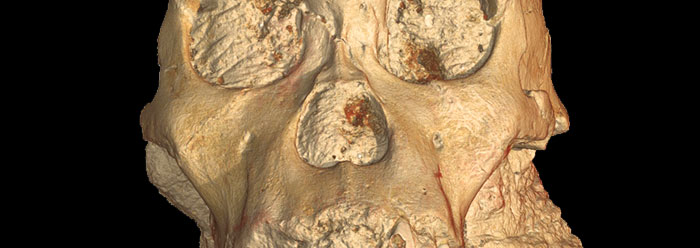Primate fossils discovered in South Africa in 2008 are being hailed as an evolutionary "game changer." ABC News recently reported that these fossils provide a "key link in the process of evolution that led to modern human beings."1 But neither is true, and it's not too hard to understand why.
Five technical papers offering new analyses of the various Australopithecus sediba bone fossils appeared this month in the journal Science. In one, researchers explained why they believe that the extinct ape-like fossils' specific age assignment makes them valid candidates for pre-human ancestors.2
The study authors argued that the "Sediba" fossils are very close to being exactly 1.977 million years old. They then attempted to build a case that there are no clearly Homo, or human, fossil remains any older than 1.9 million years. In this scenario, humans did not evolve until after Sediba. Thus, they argued that man could have arisen from some Sediba-like ancestor during the 77,000-year gap between the supposed time these remains were deposited and the time when true humans were found in the fossil record.
But a stronger case can be made that genuine human remains were deposited below, and thus before, Sediba fossils. If humans existed prior to Sediba, then these fossils are not "game changers" at all because ancestors cannot also be descendants of the same generation of creatures.
In his book Bones of Contention, anthropologist Marvin Lubenow highlighted three fossils that were recognizably human, described in evolutionary peer-reviewed journals, and dated older than 1.977 million years.3 In an online 2010 article, Lubenow wrote:
I list three fossils from Kenya and Tanzania dated by evolutionists at older than 2 million years that, morphologically, are indistinguishable from modern humans. Further, I list at least 18 Homo erectus fossils that are dated by evolutionists between 1.75 and 2 million years. More recent Homo discoveries include an upper jaw (maxilla) from Ethiopia and a lower jaw (mandible) from Malawi, both dated at 2.3 million years.4
In addition, two recent studies concluded that the Tanzanian Laetoli tracks were made by essentially human feet.5, 6 Many researchers consider these tracks to have been formed 3.7 million years ago…long before Sediba. There's also the discovery of a human foot bone that was assigned an age of three million years.7 And what about "the first appearance of stone tools at 2.6 million years ago"?8
But due to their dogmatic adherence to an evolutionary interpretation of history, evolutionists must insist that these bones, tracks, and tools were not human, even though a human origin is their most straightforward explanation. The recent Science authors conveniently dismissed evidence that genuine human remains were found in earth layers lower than Sediba's, stating:
Most of these purported early Homo fossils are of equivocal taxonomic assignment, or their age is uncertain, and thus do not conclusively demonstrate the existence of Homo before 1.90 Ma.2
However, the very reason evolutionists doubt the existence of pre-Sediba humans is because this would totally revoke Sediba's candidacy as a pre-human ancestor! In truth, the many pre-Sediba Homo remains are the real game changers. But they do not mesh well with evolutionary beliefs, so they are explained away or dismissed.
Even if the human bones, tracks, and artifacts that predate Sediba were somehow not from Homo, what is the feasibility that a creature like Sediba could have evolved into a human in 77,000 years? According to the researchers, morphing Sediba into Homo would require refashioning at least these features:
Increased brain size and organization, dentognathic [protruding mouth] reduction,…(a projecting nose), increased body size, biomechanical reorganization of the pelvis for locomotion, relative lower limb elongation, enhanced bipedal characteristics of the foot (a longitudinal arch), and the potential for tool use and manufacture.2
All those precise alterations by accidental natural forces in only 77,000 years? Really? Such drastic changes are not only impossible over the 77,000 years given in the Science report, but no amount of time would be sufficient for natural forces to transform one fully formed, well-fitted creature into another.
Instead of being a "key link" in the human evolutionary chain, Australopithecus sediba will prove to be just what Marvin Lubenow has called it…an extinct variety of an original Genesis ape kind.4
References
- Potter, N. Evolutionary 'Game Changer': Fossil May Be Human Ancestor. ABC News. Posted on abcnews.go.com September 8, 2011, accessed September 12, 2011.
- Pickering, R. et al. 2011. Australopithecus sediba at 1.977 Ma and Implications for the Origins of the Genus Homo. Science. 333 (6048): 1421-1423.
- Lubenow, M. 2004. Bones of Contention. Grand Rapids, MI: Baker Books.
- Lubenow, M. The Problem with Australopithecus sediba. Answers in Genesis. Posted on answersingenesis.org August 11, 2010, accessed September 12, 2011.
- Raichlen, D. A. et al. 2010. Laetoli Footprints Preserve Earliest Direct Evidence of Human-Like Bipedal Biomechanics. PLoS One. 5 (3): e9769.
- Crompton, R. H. Human-like external function of the foot, and fully upright gait, confirmed in the 3.66 million year old Laetoli hominin footprints by topographic statistics, experimental footprint-formation and computer simulation. Journal of the Royal Society Interface. Published online before print July 20, 2011.
- Thomas, B. 2011. "Lucy's" New Foot Bone Is Actually Human. Acts & Facts. 40 (4): 17.
- Kivell, T. L. et al. 2011. Australopethecus sediba Hand Demonstrates Mosaic Evolution of Locomoter and Manipulative Abilities. Science. 333 (6048): 1411-1417.
* Mr. Thomas is Science Writer at the Institute for Creation Research.
Article posted on September 16, 2011.














